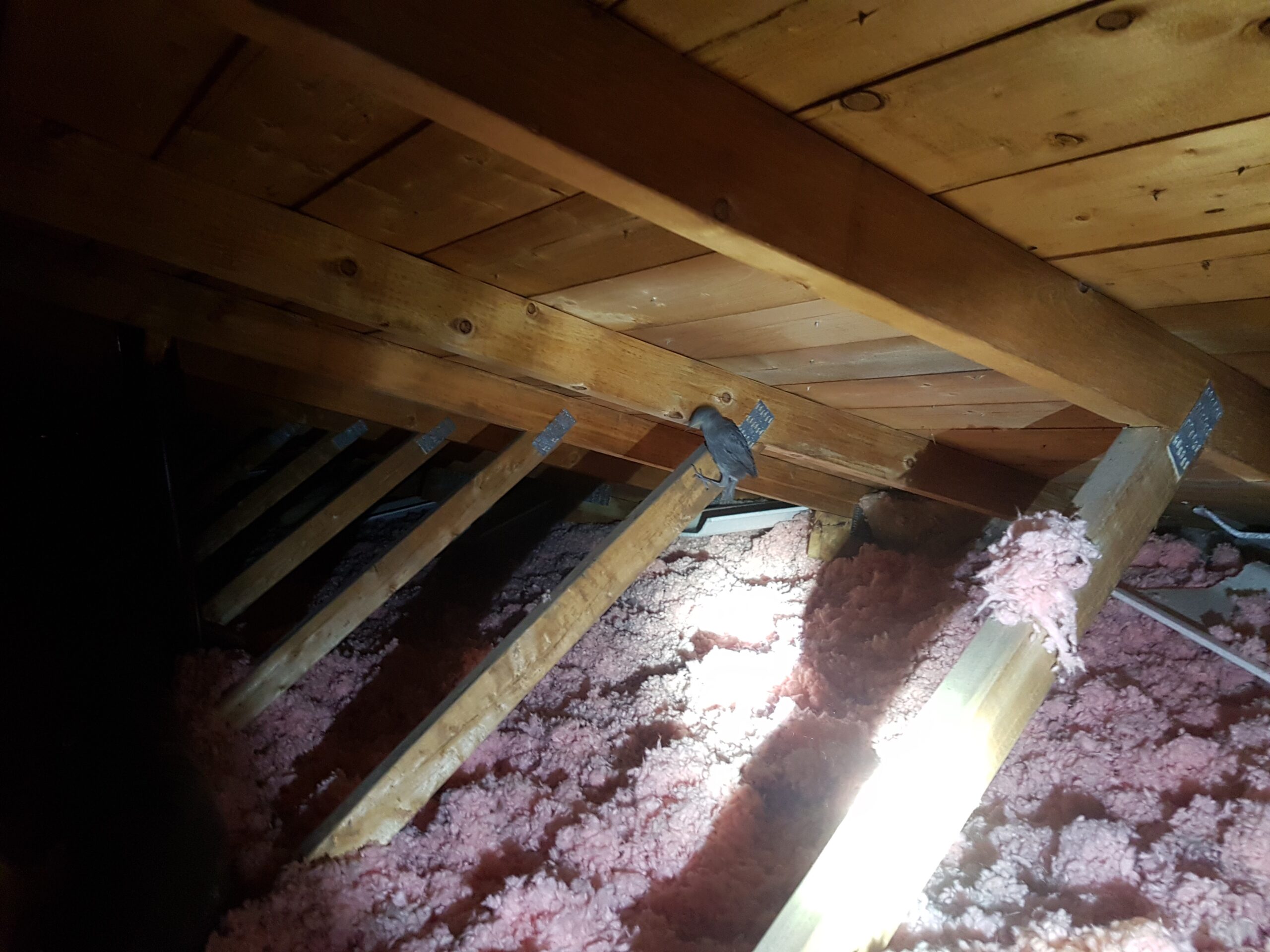Fortunately, it is a rare occurrence for a bird to get stuck in your home. However, it does happen occasionally and can be very stressful. You may be frightened, but so is the bird, and your panic will only escalate the situation. Furthermore, the bird may be hurt and in need of help. Knowing ahead of time how this scenario may arise and what to do about it can help you react appropriately should the need for bird removal in Niagara ever arise.
How Could a Bird Get Into Your Home?
There are several potential entry routes through which a bird might enter your home. You may have crack in the roof, ceiling, or siding through which one could gain entry. A bird could also potentially fly into your home through an open window or door.
Why Do Birds Fly Into Homes?
Some bird species actively seek out human habitation as a roosting place. For example, the chimney swift has to cling to vertical walls, such as the sides of your chimney, when it comes to rest because it lacks the ability to perch. However, more often a bird getting into a home is an accident. It usually happens because the animal is looking for food.
How Do Birds Behave Indoors?
You may be frightened by the presence of a bird in your home, but it is important to remember that the bird is just as afraid, if not more so. The bird will react instinctually, trying to escape by flying upward. However, its efforts will be foiled by the ceiling. If there are lights on in the room, this will further confuse the bird.
Most birds’ instincts are to try to escape danger, not confront it. Therefore, it is unlikely that the bird will react by attempting to harm your or your family by biting or scratching. Unless the bird is large or predatory, you are in no danger.
What Should You Do To Help?
Should a large predatory bird get trapped in your home, you should call professional bird removal in Niagara and make no attempt to trap or approach it. However, most of the time a bird that gets trapped in your home is small and harmless.
One of the first things to do is to remove any house pets, such as dogs and cats, to a closed-off area where the bird cannot fly. Otherwise, their predatory instincts to try to catch small animals may kick in, which will make the bird more agitated. Observe the bird carefully. If it seems injured in any way, contact an animal rescue or local humane society for assistance.
If the bird is not injured, try to encourage it to fly out. Choose one window for the bird’s escape route and open it as wide as possible. Close all other doors and windows, as well as the drapes on all but the open window. Turn off all the lights. Remove all sources of food and water from the room so that the bird has no reason to linger.
Hopefully, the bird will be attracted by the light from the open window and recognize it as a way out. If not, you may have to coax it toward the escape route by holding up a large towel or sheet and moving slowly but steadily toward the bird. You can also wave a long object such as a broom toward the bird to encourage it to go, but don’t hit it or you may injure it. Under no circumstances should you touch the bird with your bare hands, as this can damage its feathers.
Help With Bird Removal in Niagara
Our technicians at Skedaddle Humane Wildlife Control have the training to not only remove birds from your home but prevent them from coming back.



